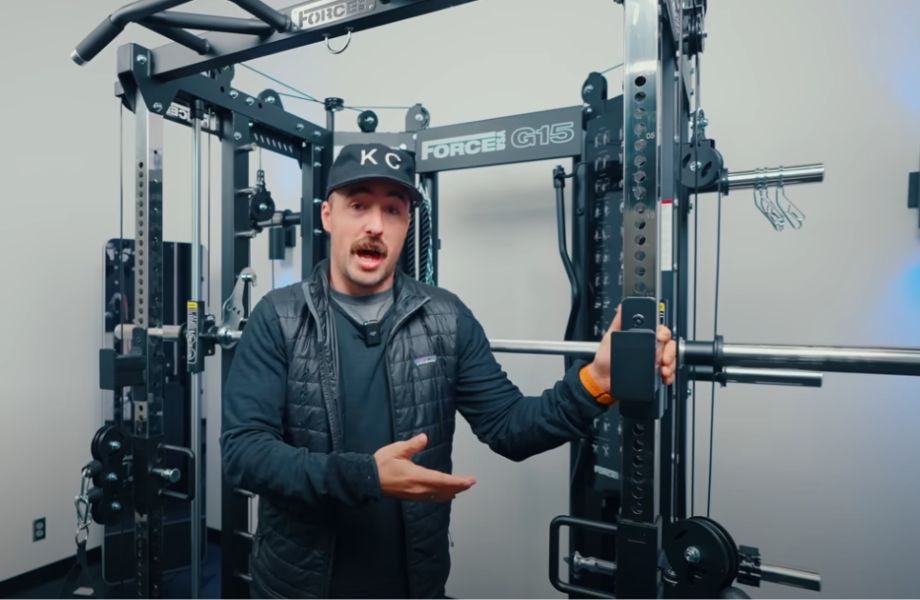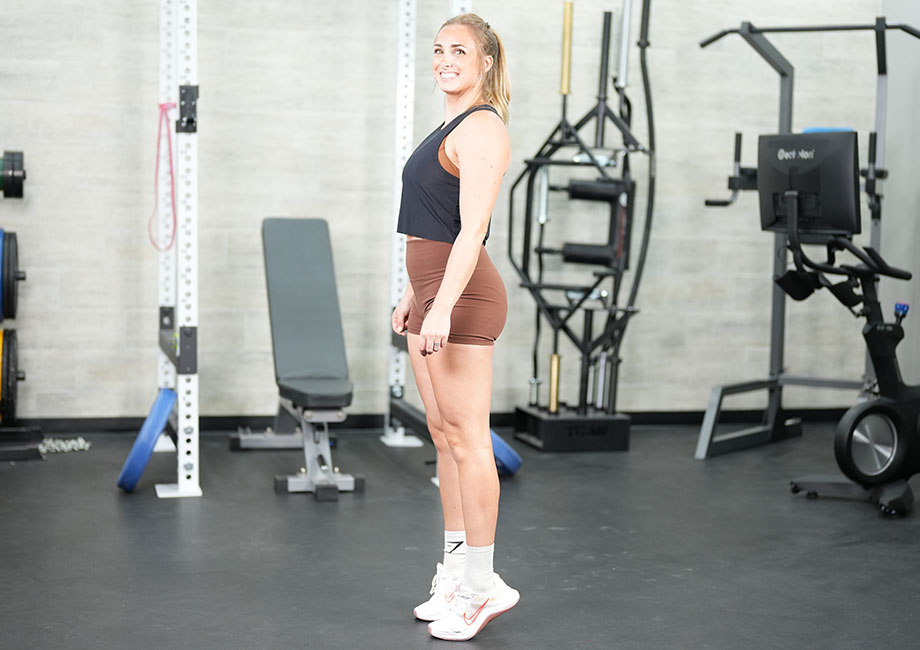It may look (or feel) confusing at first, but sitting backward on the chest fly machine allows you to perform the underrated reverse pec deck exercise, which features the same adduction movement as chest flyes to target your upper back and shoulder muscles.
RELATED: Best Rear-Delt Exercises
Kate Meier, NASM-CPT, USAW-L1, CF-L1, and GGR director of fitness content, gives us step-by-step instructions for doing the reverse pec deck exercise with proper form so you can show your rear deltoids the tender loving care and muscle activation they deserve!
How To Do the Reverse Pec Deck
The standard way of performing the reverse pec deck exercise involves the chest fly machine. Most commercial gyms have at least one, but your home or garage gym may not. No worries; we’ll also cover some ways to perform the movement without a machine.
How to do it:
- Adjust the machine to your specifications and set the desired weight.
- Sit down with your chest pressed against the seatback and your feet firmly planted.
- Grip the handles with an overhand or neutral grip.
- Pull your arms out and away until you complete a full range of motion.
- Squeeze your rear delts at the back of the movement, then slowly return to the starting position.
- Repeat for reps.
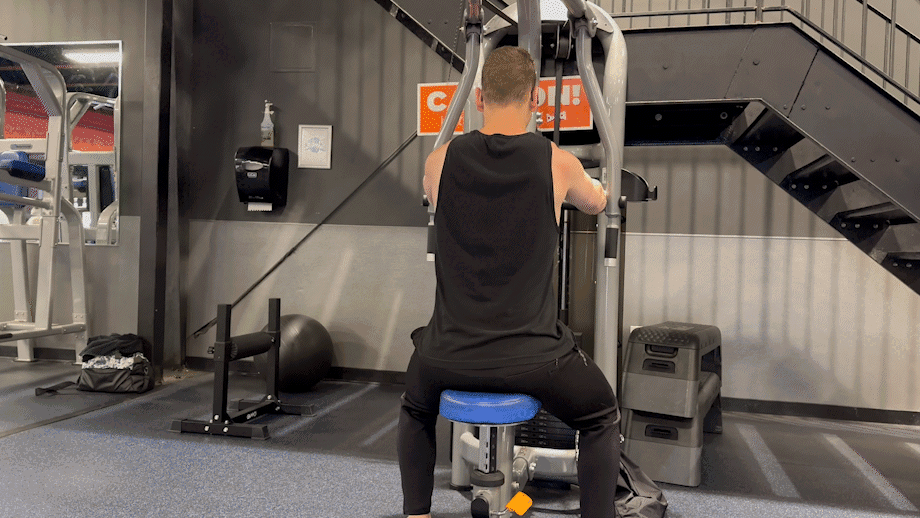
Modifications
- Dial it back: Go lighter on the weight or slightly reduce your range of motion.
- Make it harder: Go heavier on the weight or perform the movement with one arm at a time.
How To Do the Reverse Pec Deck At Home
It may take some MacGyvering™, but you can create your very own DIY reverse pec deck station using a chair or weight bench and a light resistance band.
RELATED: DIY Pulley System
Reverse Pec Deck Variations
- Single-Arm Reverse Pec Deck: The regular bilateral reverse pec deck exercise is effective, but you can also turn it into a unilateral exercise by doing one arm at a time.
- Cable Rear-Delt Fly: The cable rear-delt fly is nearly identical to the reverse pec deck exercise; however, instead of using a chest fly machine, you use a cable machine, which applies constant tension to the target muscles and allows more freedom of movement.
- Reverse Dumbbell Fly: No machines? No problem. You can get a similar stimulus with a pair of the best dumbbells by hinging forward and performing a reverse fly.
Reverse Pec Deck Alternatives
Not everyone has the budget or space for a chest fly machine for their home or garage gyms. And, while most commercial gyms stock at least one of these bad boys, they’re really popular, and you may need a reverse pec deck alternative to avoid waiting around for the machine to open up.
Check out some of our favorite reverse pec deck alternatives right here!
Reverse Dumbbell Fly
Why do it: You can use free weights in a pinch to perform a similar rear delt movement and target the same muscles. The reverse dumbbell fly is simple, convenient, and requires minimal equipment.
How to do it:
- Stand with a dumbbell in each hand held using a neutral grip.
- Push your hips back, lower your chest, and slightly bend your knees to hinge forward.
- Continue until you’re at about a 45-degree angle with the floor.
- Brace your core, slightly bend your elbows, and pull your arms out and up.
- Squeeze your shoulder blades at the top, then slowly return to the starting position.
- Repeat for reps.
RELATED: Reverse Fly Exercise
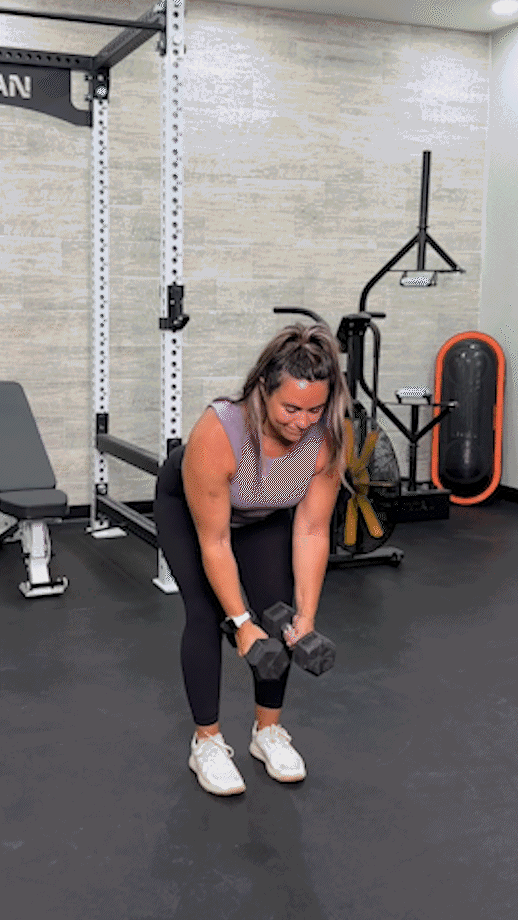
Band Pull-Apart
Why do it: “The band pull-apart is a simple yet effective way of practicing proper scapular retraction and protraction in order to target and strengthen back muscles like the rhomboids, middle traps, and rear delts,” says Kate Meier, NASM-CPT, USAW-L1, CF-L1. “All you need is a resistance band.”
How to do it:
- Grab a resistance band using a shoulder-width overhand grip.
- Extend your arms out in front of your body.
- Pull the band apart until it’s lightly touching your upper body.
- Squeeze your shoulder blades together.
- Slowly reverse the movement and return your arms to the starting position.
- Repeat for reps.
RELATED: Best Resistance Bands
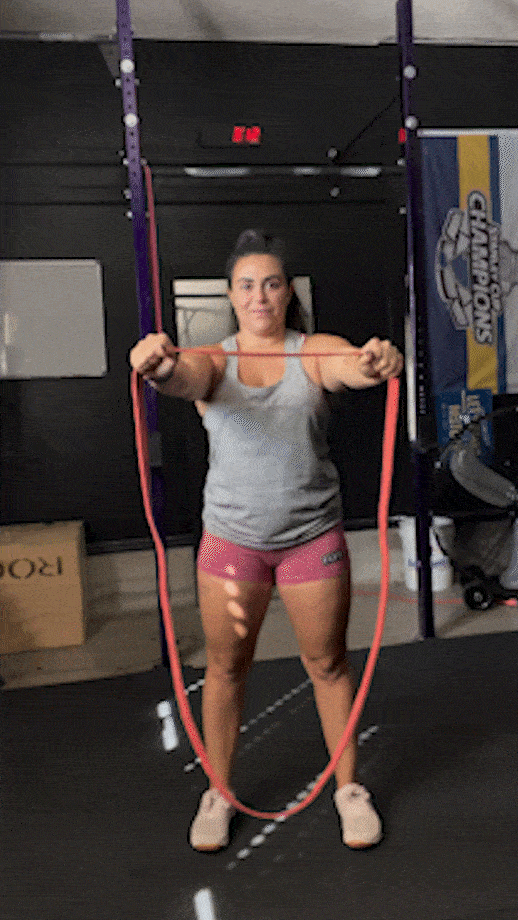
Face Pull
Why do it: The face pull hits the same muscle groups as the reverse pec deck fly, namely the upper back, trapezius, posterior deltoids, and rotator cuff muscles, promoting increased strength, hypertrophy, and endurance.
How to do it:
- Set the pulley of your cable machine to shoulder height and secure the rope attachment.
- Grip the ends of the rope with both hands and step back to create tension on the line.
- Stand with your feet shoulder-width apart, core tight, and arms fully extended.
- Pull the rope toward your face, squeezing your shoulder blades at the end.
- Pause, then slowly return to the starting position.
- Repeat for reps.
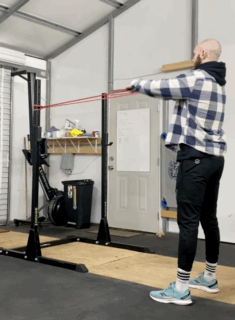
Incline Bench Row
Why do it: The bent-over dumbbell row is among the best back exercises, but the positioning makes it easy to cheat your reps when fatigue sets in. The incline bench row uses the support pad of the incline bench to stabilize your torso and keep you honest.
How to do it:
- Set a weight bench to 45 degrees of incline.
- Select your dumbbells and sit with your chest facing the seatback.
- Press your chest into the pad and let your arms dangle toward the floor.
- Row the dumbbells into the body, leading with your elbows.
- Squeeze your shoulder blades at the top.
- Pause, then slowly lower the weights back down.
- Repeat for reps.
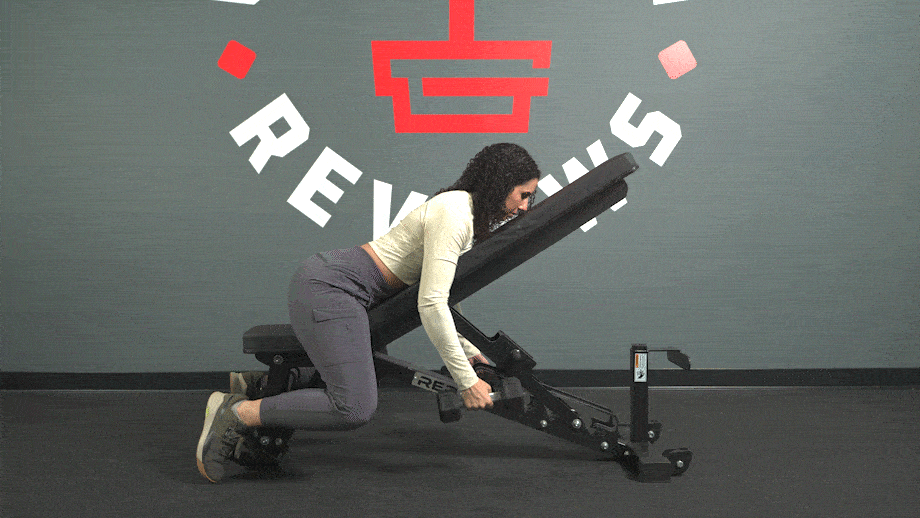
Benefits of the Reverse Pec Deck
Why should you consider adding the reverse pec deck to your back and shoulder workouts? Here are a few benefits associated with this underrated exercise.
Superior Deltoid Activation
There are loads of exercises available to target the anterior deltoids, like the barbell bench press, for example, but there are considerably fewer rear-delt exercises available that are reliable and readily available. That’s where having a reverse pec deck machine available becomes so valuable.
According to the Journal of Sports Medicine and Physical Fitness1, both the medial and posterior deltoid showed greater EMG muscle activation during the reverse pec deck exercise compared to the seated row and lat pulldown exercises. It’s one of the few shoulder exercises available that’s capable of producing so much activation in this region, making it one of the best for posterior deltoid strength training.
Unique Movement Pattern
Most back and shoulder exercises involve pulling, such as the row, lat pulldown, and face pull, or pushing, like the shoulder press. Most exercises, in general, boil down to these two simple movements: push and pull.

The reverse pec deck exercise is neither, instead using adduction to create a unique muscle stimulus to the target muscle groups. So, even if you’re already programming plenty of other effective back and shoulder exercises into your routine, there’s always a place for the reverse pec deck exercise since it’s so distinctly different.
Lower Risk of Injury
“Learning how to properly bail on certain upper-body lifts and exercises can be beneficial in the event you make a mistake or experience muscle failure and don’t have a good spotter around,” says Kate Meier, NASM-CPT, USAW-L1, CF-L1, “but the reverse pec deck is not one of them.”
Because you’re using a selectorized machine to perform the reverse pec deck exercise, all you need to do is let go of the handles in the event of muscle failure. Some gyms may frown on or prohibit dropping the weights on the stack, as this could damage them, but it’s a low-stakes consequence if the alternative is injuring yourself.
RELATED: How To Bail Out of a Squat
Given this, it’s much easier to max out on the reverse pec deck exercise if you’re lifting solo than for other back and shoulder exercises.
Common Reverse Pec Deck Mistakes
The reverse pec deck exercise is beginner-friendly, but that doesn’t mean it’s impossible to make mistakes in your setup or form. Watch out for these common mistakes when getting acquainted with this killer back and shoulder exercise.
Sitting Too High or Low
“To maximize your movement mechanics, you want your arms perfectly parallel to the floor,” says Kate. “This will provide the most deltoid engagement and allow you to produce the most power on each rep.”
Sitting too high or low, on the other hand, takes you out of alignment and diminishes your power output. Worse yet, it could increase discomfort and your risk of injury by placing unnecessary strain on your muscles or joints.
So, set up the station correctly before you begin so you’re getting the most from your reps and not placing yourself in harm’s way.
Pinching Your Shoulder Blades Prematurely
To get the most activation in the underutilized rear deltoids, you want to initiate and perform the lion’s share of the movement using just the deltoids to move your arms. Pinching your shoulder blades together prematurely robs the delts of that activation and lets the larger muscle groups, like the traps and lats, take over.
“Getting activation in your trapezius and lat muscles isn’t necessarily a bad thing, but it’s not the real purpose of the reverse pec deck,” says Kate. “There are other, more efficient exercises for targeting these muscle groups. For the rear delts, the reverse pec deck is one of the best, if not one of the only, isolation exercises for this region of the deltoid.”
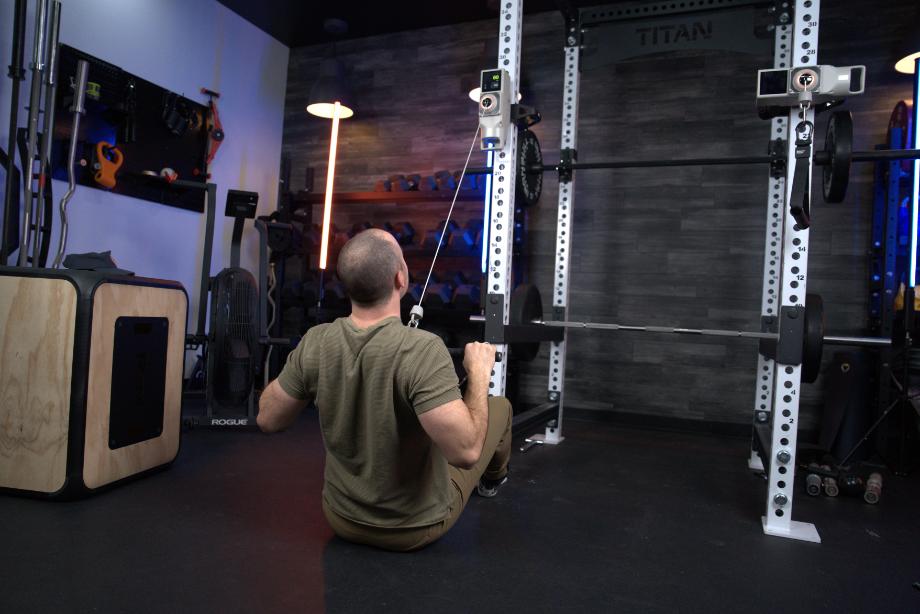
To avoid this, try not to pinch your scapulae together until the end of the exercise. Squeeze the contraction, then slowly return to the starting position before repeating.
Going Too Heavy
Some machines, like the shoulder press, chest press, and lat pulldown, really let you max out and go crazy when you’re in the zone. Lifting heavy is fundamental for strength gains, but for the reverse pec deck, “lifting heavy” means lifting much less than you would on other exercises.
“The reverse pec deck uses adduction and has your arms nearly fully extended throughout the exercise’s range of motion,” says Kate, “which means it’s harder to produce force from that position and, comparatively, means you can’t lift as heavy.”
As with most exercises, it’s prudent to start light, scale slowly, and listen to your body before biting off more than you can chew. Thanks to its superior muscle activation, you won’t need to go quite as heavy to make the same gains. Focus on getting a powerful contraction, and don’t overdo it.
Muscles Worked By the Reverse Pec Deck
The reverse pec deck is mostly used as an isolation exercise for the deltoids, namely the posterior deltoids, but those aren’t the only muscles at play here:
- Posterior Deltoid: The reverse pec deck involves horizontal adduction, so you’ll need the horizontal adductors, or the rear delts, to step up and serve as the primary movers.
- Middle Trapezius: Compared to other muscles in the region, the rear delts are tiny, so they’ll need other nearby muscles like the trapezius to assist and enable the movement.
- Triceps: You won’t get the same level of activation in the triceps as when doing lifts like the overhead press, but you’ll still need some engagement from your triceps to support the reverse pec deck movement.
- Back: The middle traps support the prime movers, but you’ll also get some involvement from the rest of your traps, lats, and rhomboids.
Reverse Pec Deck: Final Thoughts
Using the chest fly machine to perform the reverse pec deck may look funny, but it’s an underrated exercise that targets and strengthens a sorely underutilized area of your deltoids: the rear delts.
So, even if your strength training program is already comprehensive, there’s always room to add this unique and highly effective exercise into your routine. Hop on the machine and try it out the next time you hit the gym.
Reverse Pec Deck: FAQs
What’s the difference between a reverse pec deck and a face pull?
There are many differences between the reverse pec deck and face pull:
–Movement type: The face pull is a pulling exercise, as the name suggests, whereas the reverse pec deck uses horizontal adduction.
–Machine used: The face pull uses a cable machine or band to perform, whereas the reverse pec deck requires a chest fly machine.
–Target muscles: The face pull and reverse pec deck mostly target the same muscles, but to a different degree. You’ll get great all-around muscle activation to the upper back and shoulders with the face pull, but virtually no other exercise can produce posterior deltoid activation like the reverse pec deck can.
RELATED: Best Deltoid Exercises
How to do a reverse pec deck at home?
It can be difficult to perform the reverse pec deck authentically at home if you don’t have a chest fly machine in your home gym. Hope isn’t lost, however, because you can set up a DIY reverse pec deck station using a chair or weight bench and a resistance band. Here’s how:
1. Place your chair or weight bench in front of an anchor point.
2. Anchor your resistance band so it’s in line with your chest when you’re seated.
3. Grip the handles of your resistance band using a neutral grip and sit down with your arms fully extended, except for a slight bend in your elbows, in front of your body.
4. Pull the handles out to your sides and back, leading with your shoulder muscles.
5. Squeeze your shoulder blades at the end, then return to the starting position.
RELATED: Best Home Gym Machines
Which grip for the reverse pec deck?
The reverse pec deck machine allows for an overhand or neutral grip when performing the exercise, which begs the question: which grip is superior?
According to the Journal of Strength and Conditioning Research2, “a neutral hand position significantly increases activity of the posterior deltoid and infraspinatus muscles compared with a [pronated] hand position.”
Based on this, the only reason you should ever use the overhand grip during the reverse pec deck exercise would be for comfort. You can’t lift at your best if you’re uncomfortable, right?
References
1. Franke Rde A, Botton CE, Rodrigues R, Pinto RS, Lima CS. Analysis of anterior, middle and posterior deltoid activation during single and multijoint exercises. J Sports Med Phys Fitness. 2015;55(7-8):714-721.
2. Schoenfeld B, Sonmez RG, Kolber MJ, Contreras B, Harris R, Ozen S. Effect of hand position on EMG activity of the posterior shoulder musculature during a horizontal abduction exercise. J Strength Cond Res. 2013;27(10):2644-2649. doi:10.1519/JSC.0b013e318281e1e9


